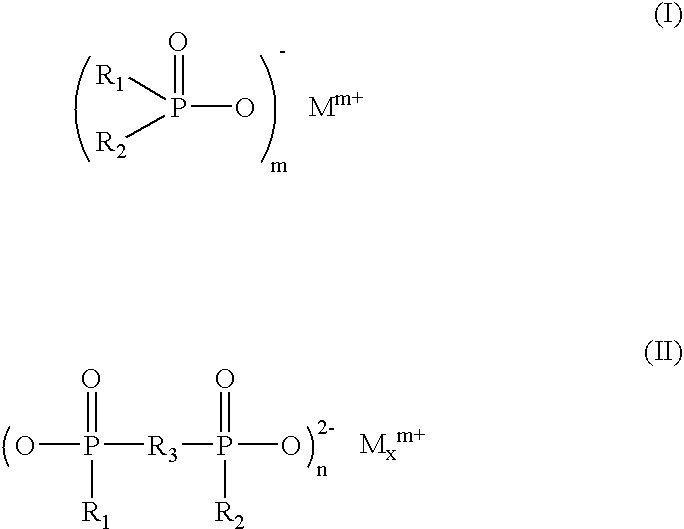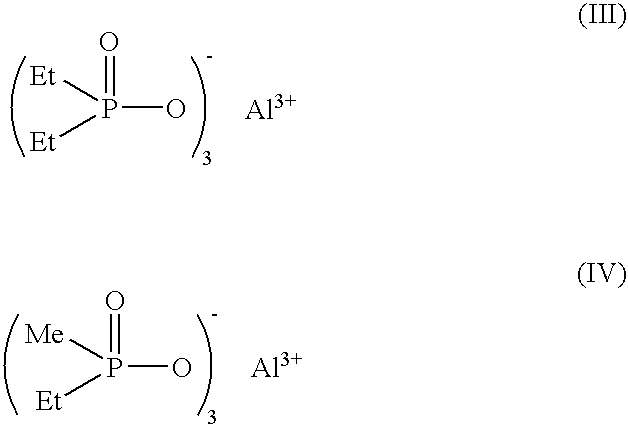Flame-retardant methacrylic composition
a technology of methacrylic composition and flame retardant coating, which is applied in the direction of synthetic resin layered products, other domestic articles, coatings, etc., can solve the problems of releasing toxic gases and causing acid and toxic gases, and achieve good flame retardancy, good surface state, good scratch resistance
- Summary
- Abstract
- Description
- Claims
- Application Information
AI Technical Summary
Benefits of technology
Problems solved by technology
Method used
Image
Examples
example 1 (
according to the invention)
[0073] The methacrylic composition is obtained by blending V920 T (80% by weight) and Exolit® OP-930 (20% by weight) using a twin-screw extruder at a flow rate of 5 kg / h. The Exolit® OP-930 disperses well in the resin. Identical results are obtained with OP-1230.
example 3 (
according to the invention)
[0075] The conditions of Example 1 are repeated with DR 2T and OP-1230.
examples 5-8
[0079] Coextrusion tests (by the capstock process) were carried out on ABS. Two extruders were used, the heads of which are connected to a feedblock, then to a sheet die and completion by passing through a calendering point with 3 vertical rolls. Two-layer PMMA (0.3 mm) / ABS (2.7 mm) strips are thus prepared. The ABS used is VO (UL-94) and does not comprise a halogenated derivative. These strips are subsequently cut up to produce samples for the fire characterizations.
TABLE IIVertical burning testABS (2.7 mm) / methacrylicaccording to the UL-94Ex.composition (0.3 mm)procedure5 (comp.)DR 2Tdrips; no classification6 (comp.)85% DR 2T + 15% OP-1230drips; no classification7 (inv.)80% DR 2T + 20% OP-1230no drips; behavioursimilar to ABS alone8 (comp.)70% DR 2T + 30% OP-1230difficulty in extrudingthe methacryliccomposition
It is found, in Example 7, that the strips exhibit a behaviour towards fire similar to that of ABS alone (not decomposed) while furthermore having an improved resistance ...
PUM
| Property | Measurement | Unit |
|---|---|---|
| mean diameter D50 | aaaaa | aaaaa |
| mean diameter D50 | aaaaa | aaaaa |
| mean diameter D50 | aaaaa | aaaaa |
Abstract
Description
Claims
Application Information
 Login to View More
Login to View More - R&D Engineer
- R&D Manager
- IP Professional
- Industry Leading Data Capabilities
- Powerful AI technology
- Patent DNA Extraction
Browse by: Latest US Patents, China's latest patents, Technical Efficacy Thesaurus, Application Domain, Technology Topic, Popular Technical Reports.
© 2024 PatSnap. All rights reserved.Legal|Privacy policy|Modern Slavery Act Transparency Statement|Sitemap|About US| Contact US: help@patsnap.com










